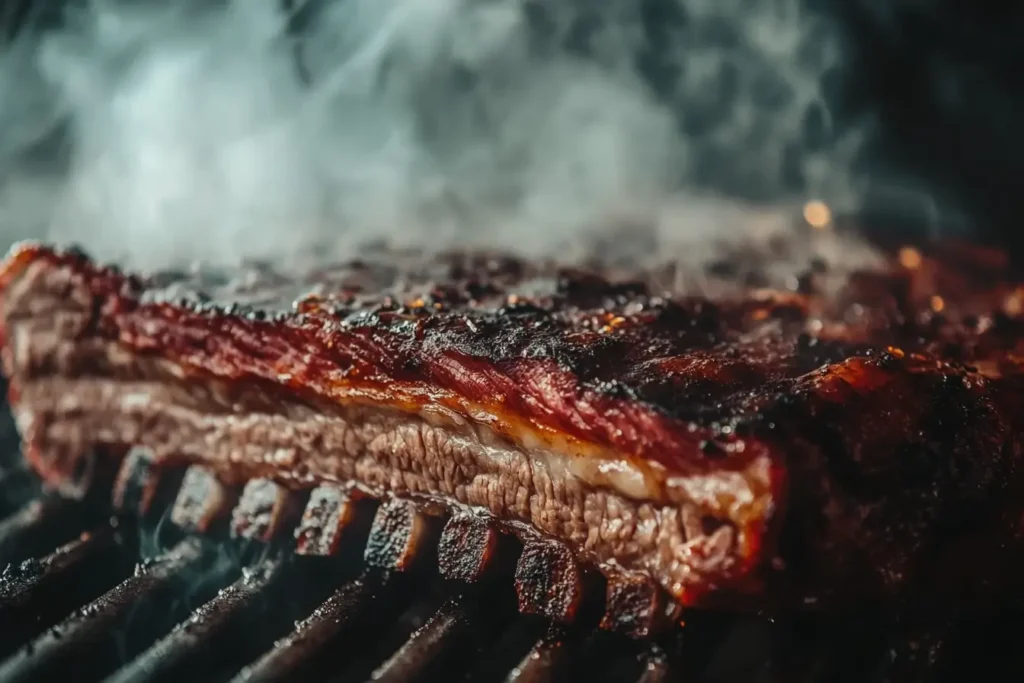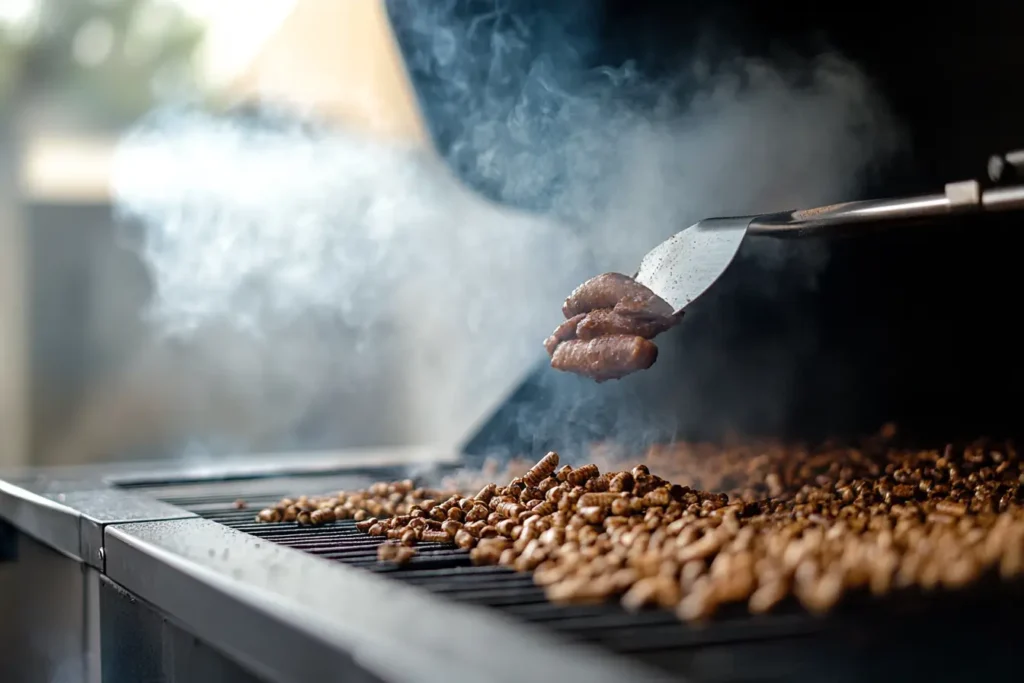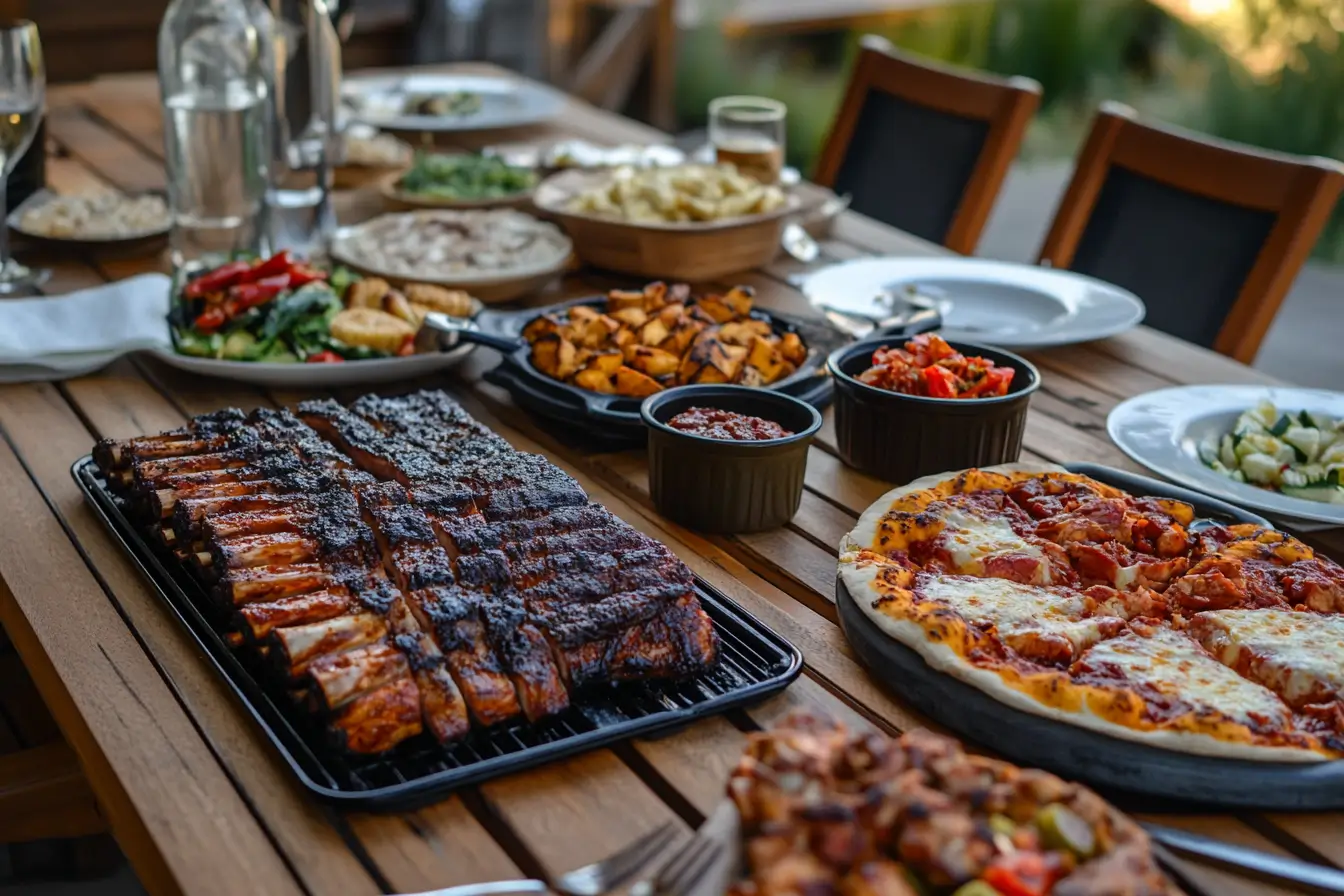Traeger recipes are incredibly popular, and for good reason! This guide unveils the ultimate secrets to mastering your Traeger, creating unforgettable meals every time. Whether you’re a seasoned pitmaster or a beginner, these tips will elevate your wood-fired cooking.
The Essential Guide to Traeger Recipes
Traeger grills offer a unique cooking experience. They combine the convenience of gas grilling with the smoky flavor of traditional wood smokers. Understanding the fundamentals is crucial for consistently delicious results.
What Makes Traeger Recipes Special?
The key to Traeger’s appeal lies in its indirect heat and wood pellet fuel. This combination creates a gentle cooking environment that infuses food with a rich, smoky taste. Unlike charcoal or gas, wood pellets offer a consistent and predictable burn.
Choosing the Right Traeger Pellets
Selecting the right wood pellets significantly impacts the flavor of your food. Different woods impart distinct tastes, ranging from subtle to robust. Experiment with various blends to discover your favorites. Common choices include hickory, mesquite, apple, cherry, and oak.
Controlling Temperature on Your Traeger
Maintaining a consistent temperature is essential for successful Traeger recipes. Fortunately, Traeger grills are equipped with digital controllers. These controllers automatically feed pellets to the firepot, ensuring a steady heat. Regular monitoring is still important, especially in fluctuating weather conditions.
Unlocking The Secret to Incredible Traeger Recipes
Success with your Traeger involves more than just following instructions. It’s about understanding the nuances of wood-fired cooking and adapting recipes to your equipment and preferences.
Secret 1: Mastering the Low and Slow Technique
Many of the best Traeger recipes involve the “low and slow” method. This involves cooking food at a low temperature for an extended period. Low and slow breaks down tough connective tissues, resulting in tender and flavorful meat.

Secret 2: The Art of Brining and Marinating
Brining and marinating enhance the moisture and flavor of your food before it even hits the grill. Brines typically involve soaking meat in a saltwater solution, while marinades use acids, oils, and spices to penetrate the surface.
Secret 3: Understanding the Smoke Ring
The smoke ring is a visual indicator of properly smoked meat. It’s a pinkish layer just below the surface, formed by a chemical reaction between the smoke and the myoglobin in the meat. A pronounced smoke ring is a sign of skilled smoking.
Secret 4: Monitoring Internal Temperature
Using a meat thermometer is the most reliable way to determine when your food is done. Different meats require different internal temperatures for optimal doneness. Consult a reliable temperature chart to avoid overcooking or undercooking.
Secret 5: Experimenting With Different Traeger Recipes
Don’t be afraid to venture beyond basic recipes. The possibilities with a Traeger are endless, from smoking fish and vegetables to baking desserts. Explore different flavors and techniques to create your own signature dishes.
Traeger Recipes: Meats That Will Wow Your Guests
The Traeger excels at smoking various types of meat, from classic barbecue staples to more adventurous cuts. Here are a few standout options.
Traeger Smoked Brisket: The King of BBQ
Brisket is often considered the holy grail of barbecue. Smoking a brisket on a Traeger requires patience and attention to detail, but the results are well worth the effort. The key is to cook it low and slow until it’s melt-in-your-mouth tender.
Traeger Pulled Pork: A Crowd-Pleasing Favorite
Pulled pork is another barbecue classic that shines on a Traeger. A pork shoulder, also known as a Boston butt, is ideal for pulled pork. It’s relatively inexpensive and yields a large amount of flavorful, shredded meat.
Traeger Ribs: Fall-Off-The-Bone Perfection
Ribs are always a hit, and the Traeger makes them easy to prepare. Whether you prefer baby back ribs or spare ribs, the key is to cook them until they’re tender and juicy. Many pitmasters use the “3-2-1 method,” which involves smoking the ribs for 3 hours, wrapping them in foil for 2 hours, and then cooking them unwrapped for 1 hour.
Traeger Chicken: Simple and Delicious
Chicken is a versatile option that can be smoked on a Traeger with great results. Whole chickens or individual pieces can be smoked for a delicious and healthy meal. Consider brining the chicken beforehand for added moisture and flavor.
Beyond Meat: Other Amazing Traeger Recipes
The Traeger isn’t just for smoking meat. It can also be used to cook a wide variety of other foods, including vegetables, seafood, and even desserts.
Traeger Smoked Vegetables: A Healthy and Flavorful Side Dish
Smoking vegetables adds a unique depth of flavor that you can’t achieve with other cooking methods. Bell peppers, onions, zucchini, and corn on the cob are all excellent candidates for the Traeger.
Traeger Smoked Salmon: An Elegant Appetizer or Main Course
Smoking salmon on a Traeger is a relatively quick and easy way to create a delicious and impressive dish. Use a mild wood like alder or apple to complement the delicate flavor of the salmon.

Traeger Pizza: A Wood-Fired Twist on a Classic
Baking a pizza on a Traeger imparts a subtle smoky flavor that elevates it to a new level. Use a pizza stone to create a crispy crust and experiment with different toppings.
Troubleshooting Common Traeger Problems
While Traeger grills are generally reliable, occasional issues can arise. Here’s how to address some common problems.
Pellet Feed Issues
If your Traeger isn’t feeding pellets properly, check the auger for blockages. Also, ensure that the hopper is filled with dry, high-quality pellets.
Temperature Fluctuations
Temperature fluctuations can be caused by several factors, including wind, ambient temperature, and pellet quality. Consider using a grill blanket in cold weather and adjusting the temperature setting as needed.
Smoke Production Problems
Insufficient smoke production can result from using old or damp pellets. Make sure your pellets are fresh and dry. Also, ensure that the firepot is clean and free of ash.
Traeger Recipes: Mastering Your Wood-Fired Oven
Becoming proficient with Traeger recipes requires experimentation, patience, and a willingness to learn. By mastering the fundamentals and exploring different techniques, you can create amazing meals that will impress your family and friends. Remember to always prioritize safety and follow the manufacturer’s instructions.
Traeger Recipes: Finding Your Perfect Smoke Profile
Ultimately, the best Traeger recipes are the ones that you enjoy the most. Experiment with different wood pellets, rubs, and sauces to create a smoke profile that suits your taste. Don’t be afraid to get creative and develop your own signature dishes.
FAQ
What is the best thing to cook on the Traeger?
There’s no single “best” thing, as it depends on personal preference. Brisket, pulled pork, and ribs are popular choices for their rich, smoky flavor. However, the Traeger is also excellent for smoking salmon, chicken, vegetables, and even pizza.
What is the Traeger 321 method?
The Traeger 3-2-1 method is a popular technique for smoking ribs. It involves smoking the ribs uncovered for 3 hours, wrapping them in foil with liquid for 2 hours, and then smoking them unwrapped for 1 hour. This method helps to tenderize the ribs and infuse them with flavor.
What’s better, Pit Boss or Traeger?
Both Pit Boss and Traeger are reputable brands of pellet grills. Traeger is generally considered to be the more established brand, known for its consistent performance and user-friendly interface. Pit Boss often offers a more budget-friendly option with a wider range of features. The best choice depends on your individual needs and budget.
Is Traeger a real smoker?
Yes, the Traeger is a real smoker. It uses wood pellets as fuel to create smoke and heat, imparting a distinct smoky flavor to food. While it’s not a traditional offset smoker, it provides a convenient and consistent way to achieve authentic smoked results.

